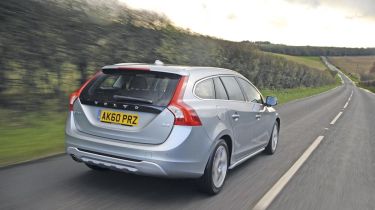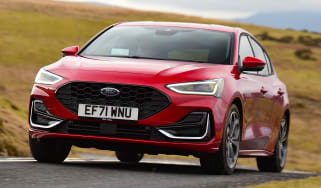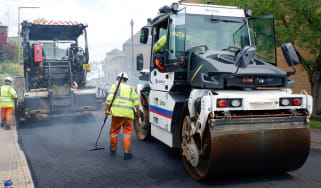Volvo V60
New load carrier has the looks, but can it match upmarket rivals on road?
Opting for a less practical but more stylish design is a brave move by Volvo. The V60 could upset fans of its previous estate models – but with its curvy looks and upmarket cabin, the newcomer should appeal to a whole new audience of younger buyers. It’s a shame, then, that it doesn’t quite live up to its billing as a driver’s car. Perhaps we’ll reserve judgement on that until we’ve tried the R-Design model.
It's the curvy estate that aims to shed Volvo’s sensible image, and Auto Express has driven it first in the UK! But the V60 faces some stiff competition from the Audi A4 Avant and BMW 3-Series Touring – so has it got what it takes to stand out from the crowd?
The Swedish wagon does hold an ace up its sleeve that no other estate can match: Volvo’s Pedestrian Detection system, which can apply the brakes if it thinks a collision is imminent. In addition, safety systems warn if the driver is tired or veering out of their lane, and also monitor blindspots.
It all seems very Volvo so far. The big changes, though, are in the styling and driving experience. Instead of sacrificing looks for pure load-carrying ability, designers have included a sweeping, coupé-like roofline that’s light years away from boxy Volvos of the past, and qualifies as the manufacturer’s best-looking estate yet.
Used - available now

2022 Kia
e-Niro
25,517 milesAutomaticElectric
Cash £17,700
2022 Mercedes-Benz
CLA Shooting Brake
43,146 milesAutomaticPetrol1.3L
Cash £21,600
2022 Audi
Q3
18,833 milesAutomaticPetrol2.0L
Cash £27,300
2019 Ford
Kuga
40,052 milesManualPetrol1.5L
Cash £12,216But that doesn’t mean it’s not practical. Boot space with the rear seats in place is 557 litres, and folding them in a 40:20:40 configuration increases that to 1,241 litres.
The passenger seat can be folded flat, too, so longer items fit in without a problem. There are also plenty of clever extras, including optional twin booster cushions for children in the outer rear seats.
Up front, there’s a fine mix of brushed metal inserts, soft leather and good-quality plastics. The layout is stylish, and up there with the best in terms of build quality and general ambience.
Engineers have focused on enhancing the driving experience, too, but it still falls short of rivals such as the 3-Series Touring. It’s a marked improvement on previous Volvo estates, yet while the steering is responsive, it doesn’t provide enough feel and could do with more weight.
The softly sprung suspension causes the V60 to roll during hard cornering, and the six- speed manual box fitted to our model is vague. You’re often left unsure of exactly which gear you’ve just selected.
As a result, we’d advise you to go for the six-speed automatic Geartronic set-up. Although this dents economy and costs more, it provides quick and seamless shifts.
What the V60 lacks in handling ability it makes up for in comfort and refinement. The suspension does a great job of smoothing bumps in the surface, while road and wind noise levels are among the best in the class. The only slight downside is the 2.0-litre single turbocharged diesel engine fitted to our D3 model. It has plenty of pace, with 161bhp and 400Nm of torque on offer, but the power tends to arrive and disappear incredibly quickly. It’s also quite loud when pushed hard, even if the sound itself is surprisingly sporty.
On the plus side, the sprint from 0-60mph takes 8.9 seconds and top speed is 137mph. The V60 is green as well, returning 51.4mpg combined economy and emitting 144g/km of CO2.
Prices start from £24,960 for basic ES models fitted with the D3 engine – and you get plenty
of equipment for your money. Cruise and climate control, a
five-inch display screen and heated door mirrors all feature
on base cars. R-Design models top the range, and come with
a sporty bodykit and stiffer
suspension, as well as a set
of 18-inch alloy wheels.
Rival: BMW 320d Touring
The 3-Series is the compact executive load carrier to beat. Its 2.0-litre diesel unit provides plenty of punch, and is clean and efficient, and the Touring drives just as well as the saloon model. Strong residual values complete a winning package







